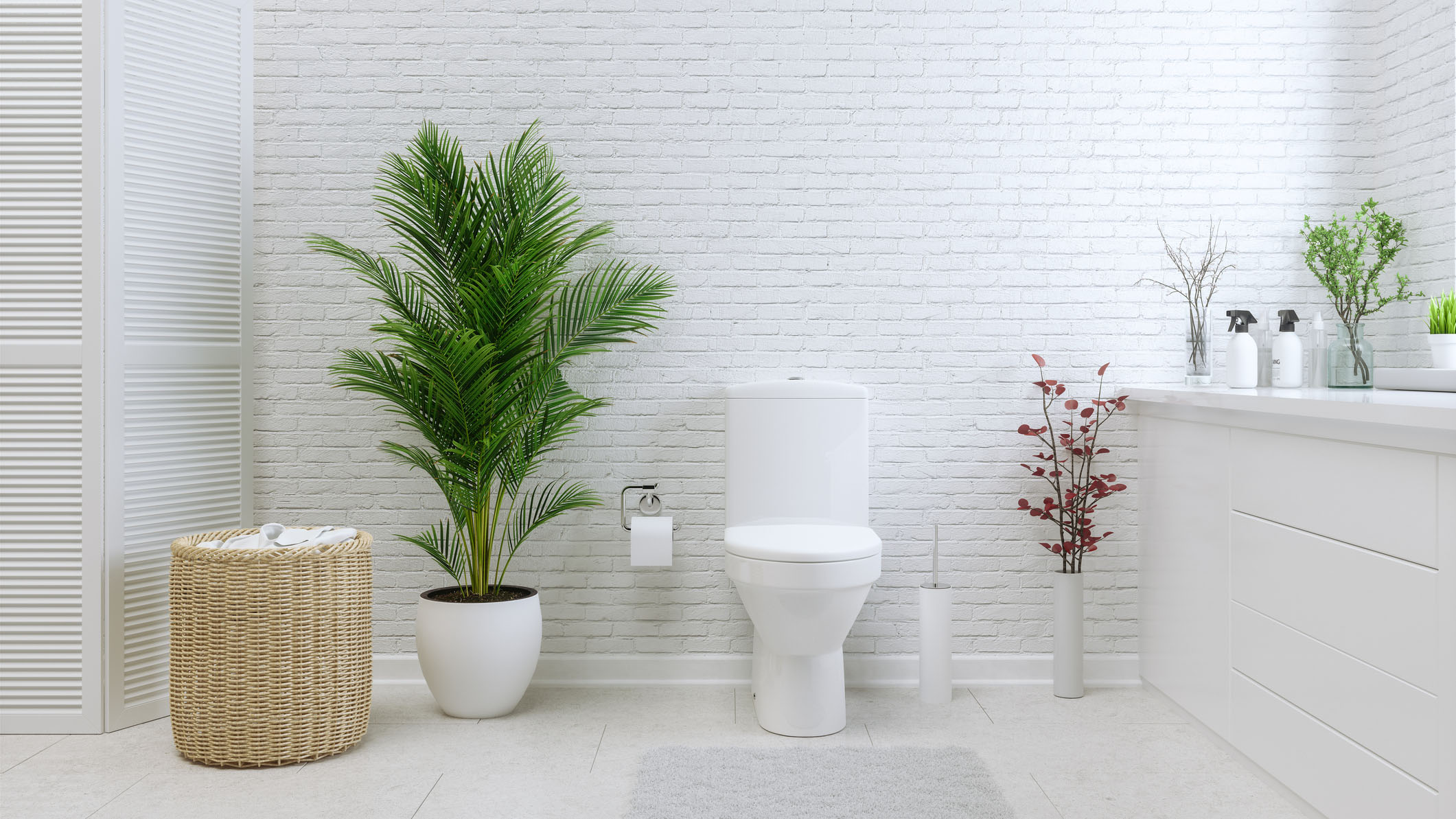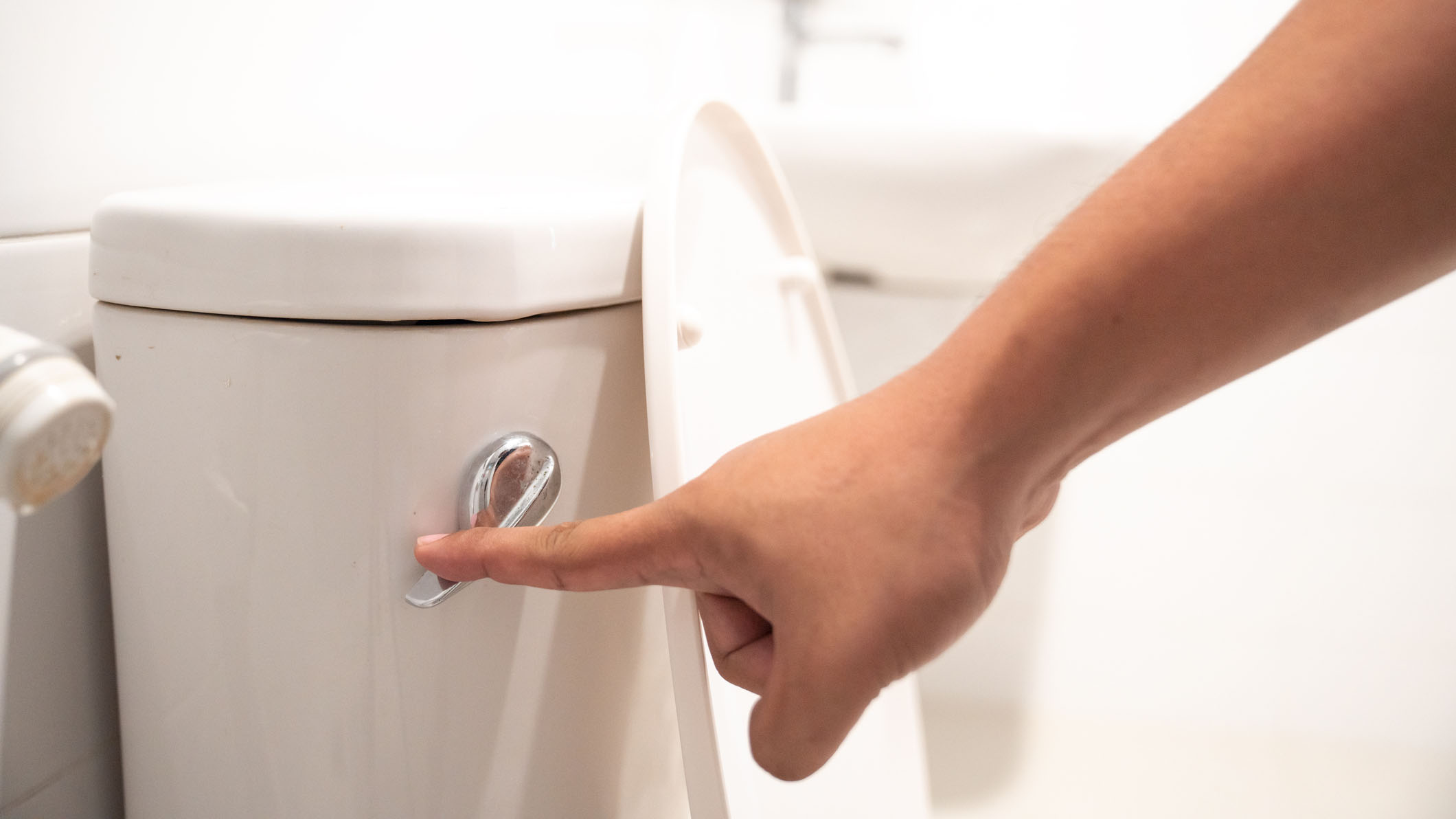How to clean toilet bowl stains thoroughly for a gleaming toilet
Working out how to clean toilet stains isn't a pretty job, but it's essential for a sparkling bathroom

Cleaning your toilet, and in particular, working out how to clean toilet stains, may be one of the less exciting parts of adult life, but it's a necessary chore for a hygienic bathroom.
Removing stains from your toilet can be particularly arduous if you've neglected this bathroom cleaning task—hard stains can accumulate and become stubbornly stuck on. Sometimes, staining can happen in areas of the toilet that are hard to reach when undergoing your regular toilet clean. Similarly, if there are any cracks or leaks in your toilet, stains can also form around those areas. This is why knowing how to clean a toilet thoroughly is so important.
Making sure your toilet bowl is clean and fresh is an essential step in good home maintenance. After all, staying on top of toilet stains is essential for your health, as giving it a regular scrub reduces the occurrence of harmful germs and bacteria in the bathroom.
Why and how do toilet stains happen?
Of course, dirt and build-up in our lavatories isn't a surprise, given their primary function. But if you're seeing stains in your toilet bowl or around the rim, it's worth knowing that there are three main things likely to cause this.
- Bacterial growth—the moist environment inside the bowl is like heaven to germs, giving them space to spread and flourish. And if the toilet isn't regularly cleaned, the bacteria will cling onto the toilet and begin to stain it.
- Hard water—if you live in a hard water area, it's more likely you'll get stains on your toilet. The quality of your tap water depends entirely on your geographical location, so while this is not something you can control easily, there are ways to mitigate the impact. Hard water causes a crusty residue to form around the rim and in the bowl. This residue holds on to the bacteria and other debris, creating stains. You might find the same is true for your kettle (and you might want to peruse our guide to how to descale a kettle to tackle this).
- Waiting too long between cleanings—regular spot cleans and a weekly deep clean should keep toilet stains at bay.
What you will need to clean toilet stains
Once you're ready to tackle this task, you'll need to collect some supplies to get the job done. You might already have these in your cleaning arsenal—but if not, they are helpful cleaning essentials to buy.
You will need:
- Cleaning gloves
- Toilet brush
- Pumice or toilet stone
- Toilet bowl cleaner (any is fine)
- Disinfecting spray cleaner
- Cleaning cloth or paper towel
An important thing to note about toilet cleaners—most plumbers recommend staying away from harsh chemical cleaners that may be corrosive, as this could damage the toilet more. Commercial drain cleaners, for example, have been known to crack the porcelain. Instead, go with a cleaning brand you trust, a homemade concoction, or one that is stated to be better for the environment. This will be gentler on your toilet bowl.
Sign up to our free daily email for the latest royal and entertainment news, interesting opinion, expert advice on styling and beauty trends, and no-nonsense guides to the health and wellness questions you want answered.
How to clean toilet bowl stains—a step-by-step guide
There are five basic steps to get your toilet clean and stain-free—by following this process in this order, your toilet will be gleaming in no time.
1. Do a quick brush around the bowl
The first step is to use your brush and toilet bowl cleaner to do a quick scrub around the entire inside of the toilet. This does not need to be your best cleaning work—just a quick round or two around the bowl should do it. The primary aim of this step is to give the toilet a surface clean, to get rid of any lingering spots of dirt, before a deep clean. Once this is done, you should then flush the toilet. You will probably see a ring around the bowl where the waterline sits.
2. Lower the water level in the bowl
Do this step if the stain is below the water in your toilet bowl. If it is above the waterline, you can move straight on to step three. Use the toilet brush to push the water through the drain—to do this, just push the toilet brush through the drain with a few forceful shoves. This may take a little time, but you should see the water receding a bit, if not disappear altogether. This technique temporarily lowers the water in the bowl while you are cleaning—all you need is for the water line to be lower than the stain.
Another way to lower the water, if the above isn't working, is to adjust the float ball in the tank. This is not a temporary change, and if you want to switch it back, you will need to adjust it again after cleaning.
To adjust the float ball in your tank:
- Take off the lid from the tank
- Remove the chain from the float ball
- Reattach the chain at a lower point, shortening it
- Replace the lid on the tank
- Flush the toilet
After the toilet is done flushing, the water line will be lower. If you decide to keep these settings in place, you will save some water, but this could cause stains to be lower and harder to reach the next time you clean the toilet.

3. Scrape the bowl to tackle the stain
Now you will need to use a white pumice stone, or one that is specifically made for toilets, to begin scrubbing at the stain. Start by rubbing the stone around the stained ring area. The point is to scrape off the hard water residue slowly. If you have staining under the rim, you will need to repeat these steps there too. While you should be careful and fairly gentle with this step, don't worry too much about harming your toilet—white pumice and toilet stones are generally safe for use on porcelain.
4. Scrub away the mess with a toilet brush
The next step is to use the toilet brush and bowl cleaner again before flushing. The aim of this is to loosen any of the dirt and hard water so that it will easily lift off and flush away. It's important to note here that if you still see stained areas, repeat step three above until the stain has disappeared. For really stubborn stains that may have been there a while, it could take multiple tries.
5. Clean the rest of the toilet
Now that you have removed the staining, it's a good idea to give your toilet a general clean. Starting from the top of the toilet at the tank, begin spraying your disinfecting cleaner.
Next, you will use a cloth or paper towel to wipe clean. Don't forget the flusher. Keep spraying the surface as you make your way around the entire toilet. It's wise to wipe the floor under the toilet, too, unless you're planning on mopping afterward.
How to prevent toilet stains in future
After doing a deep clean of your toilet to get rid of stains, you'll likely want to know how to prevent stains from building up in the future. Below are a few tips for preventing toilet stains, to ensure regular upkeep of your loo is simple and quick going forward.
- Clean regularly—cleaning your toilet as often as possible is a good way to prevent stains from building up. A good rule of thumb for regular bathroom cleaning is once a week. Designate a bathroom cleaning day, or add it to your chore schedule.
- Flush the toilet—flushing your toilet often will help to give it a quick rinse, thereby reducing the likelihood of stains building up. If you want to save flushes and water though, you might want to consider a dual-flush or low-flow toilet. If that's not in the budget, put a brick in the tank. Doing this will decrease the amount of water needed to refill the tank after each flush without lowering the amount of water in the bowl.
- Manage hard water—if you really want to avoid hard water stains on your toilets and other fixtures, you will need to invest in a water softener. These are not cheap, but they will increase your home's value, increase the life of your fixtures, and help keep your plumbing working efficiently. Another place you will feel the benefit of soft water is on your body—hard water can be harsh on your skin and hair, too, causing dry skin and weighed-down hair.
Cleaning your toilet may never be your favorite chore, but having a fresh, clean bathroom every day is worth the effort.
And now that you've given your toilet a deep clean, why not turn your attention to other parts of your bathroom? See our guide to how to clean marble, or how to clean grout in your shower or bath. We also have a step-by-step guide to how to clean windows—an often-missed part of our bathroom cleaning routine. The whole room will be sparkling in no time!
Amy Hunt is an experienced digital journalist specialising in homes, interiors and hobbies. She began her career working as the features assistant at woman&home magazine, before moving over to the digital side of the brand where she eventually became the Lifestyle Editor up until January 2022. Amy won the Digital Journalist of the Year award at the AOP Awards in 2019 for her work on womanandhome.com.

